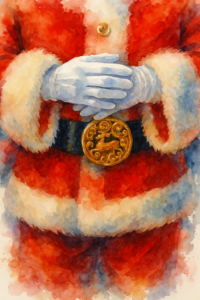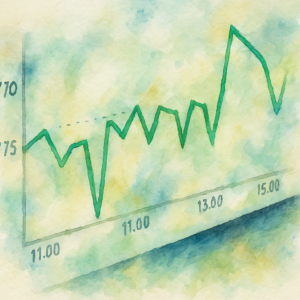Improve your French listening skills with this clip of French in real life. How much of this clip can you understand? Listen in and fill in the blanks at your level. Words I looked up? “tu en es où”, “d’une façon”, and “euh bah”. Keep up the practice and dive into today’s clip!
Take the quiz, join the conversation.
Did you find this one challenging or easy? Did you hear something diffferent? What surprised you? What levels did you complete? Comment below and share what’s opening up for you with this quiz.
Learn French with a podcast snippet! This clip is is from Transfert s01ep22. We do not own the content. Listen to the entire episode here.
The above audio sample and transcription is from Transfert s01ep22. We do not own the content. Listen to the entire episode here.
where are you at?
What’s opening up for you with this clip?
The snippet in English
Find a translation of this snippet here, how much of this did you hear?
Donc euh je lui demande euh, qu’est-ce que tu attends euh de cette euh d’une relation à cette euh à cette époque de ta vie, tu en es où, c’est quoi pour toi ? Et donc il me dit, euh d’une façon très nonchalante, euh moi ce que je recherche, euh bah c’est d’avoir des des relations sociales, d’avoir une une bonne amie avec qui euh je puisse avoir du bon temps.
So uh I ask him uh, what do you expect uh from this uh from a relationship at this uh at this time of your life, where are you at, what’s it like for you? And so he says to me, uh in a very nonchalant way, uh what I’m looking for, uh bah is to have social relations, to have a good friend with whom uh I can have a good time.
The above translation from Deepl
What does “tu en es où” mean?
“Tu en es où” translates to “Where are you at?” or “How far have you gotten?” in English.
Usage and Interpretation
- This is an informal and colloquial way to ask someone about their progress or status in a particular task, situation, or process.
- “Tu” means “you.”
- “En” refers to the task or situation in question.
- “Es où” comes from the verb “être” (to be) and means “are at” in this context.
Examples
- “Tu en es où avec ton projet ?” (Where are you at with your project?)
- “Tu en es où dans le livre que tu lis ?” (How far have you gotten in the book you’re reading?)
Context
- “Tu en es où” is commonly used in casual conversations among friends, family, or colleagues.
- It’s a way to inquire about someone’s progress or current position in a non-formal manner, often used to show interest in what the other person is doing.
Summary
“Tu en es où” means “Where are you at?” or “How far have you gotten?” in French. It’s an informal way of asking someone about their progress or status in a specific task, situation, or process. The phrase is commonly used in everyday conversations, reflecting a friendly and casual interest in someone’s activities or accomplishments.
What does “d’une façon” mean?
“D’une façon” translates to “in a way” or “in one way” in English.
Usage and Interpretation
- “D’une” is the combination of the preposition “de” (of/from) and the indefinite article “une” (a/an), translating to “of a” or “in a.”
- “Façon” means “way” or “manner.”
- Together, “d’une façon” is used to describe the manner or method in which something is done.
Examples
- “Il l’a résolu d’une façon très intelligente.” (He solved it in a very intelligent way.)
- “D’une façon ou d’une autre, nous trouverons une solution.” (In one way or another, we will find a solution.)
Context
- “D’une façon” is used in various contexts where discussing the method, style, or manner of doing something is relevant.
- It’s a versatile phrase, suitable for both spoken and written French, and can be used in casual conversations as well as more formal or technical discussions.
Summary
“D’une façon” means “in a way” or “in one way” in French. It’s used to describe the manner or method in which something is done. The phrase is commonly employed in a variety of contexts to discuss how actions are performed or situations are approached, highlighting the specific manner or style involved.
What does “euh bah” mean?
- “Euh”: This part of the phrase is akin to “um” in English and is a common hesitation sound. It indicates that the speaker is pausing to think or is unsure about what to say next.
- “Bah”: Similar to “well” or “so” in English, “bah” is often used to introduce a statement or to transition to another point. It can convey a range of tones, from uncertainty to mild surprise or casual acknowledgment.
Examples in Conversation
- When thinking: “Euh bah, je ne suis pas sûr de la réponse.” (Uh, well, I’m not sure of the answer.)
- Expressing uncertainty: “Euh bah, peut-être que nous devrions vérifier.” (Um, so, maybe we should check.)
- Transitioning in conversation: “Euh bah, maintenant parlons de quelque chose d’autre.” (Uh, well, now let’s talk about something else.)
Summary
“Euh bah” in spoken French is a colloquial filler phrase similar to “um, well” or “uh, so” in English. It’s commonly used in casual conversations when the speaker is thinking, hesitating, transitioning between thoughts, or introducing new points. This expression reflects the natural pauses and rhythms of spontaneous speech.
This clip is from the “Transfert” podcast
Produced by slate.fr, “Transfert” is a unique French podcast that offers an immersive listening experience. Each episode features real-life stories narrated by the people who lived them. These personal narratives cover a wide range of human experiences and emotions, providing listeners with profound insights into the lives and minds of others. The storytelling is intimate and engaging, making it an excellent resource for French language learners to improve their listening skills while connecting with compelling, authentic content.
Improving your French Listening Comprehension with Podcasts
On this site, fast spoken French is finally accessible to all levels. The tool break podcasts into short clips each set to transcription fill-in-the-blank practice. My favorite practice in class is always dictées. While they can seem overwhelming at first, the confidence boost and skills payoff for doing the work pays off. They’re perfect for anyone at any level, from advanced students to those just starting.
We use podcasts and our practice exercises to make it possible for anyone, anywhere to immerse in French with fun and ease. Join us and enjoy French, one short clip at a time. Let’s learn together!
Make the most of the site:
- Daily Podcast Listening: Start your day with a French podcast from our collection. Choose episodes that align with your interests to keep it engaging.
- Active Listening Practice: As you listen, try to pick out key phrases and vocabulary. Use our daily quizzes to test your understanding and reinforce learning.
- Repeat and Shadow: Listen to the same podcast segment multiple times. Try to mimic the pronunciation and intonation to improve your spoken French.
- Note-taking: Jot down new words or phrases you encounter. Review these notes regularly to enhance vocabulary retention.
- Reflect and Respond: After each episode, summarize the main points in French, either in writing or aloud. This helps in consolidating your learning and improving your expressive skills.
- Read More:
- True Beginner or A1 Learners: discover tips learning with podcasts at an introductory level.
- Discover all the podcast clips on FrenchIRL organized by level.
- Top Tips: Here’s how I make the most of my own site.
I created the French In Real Life project because I wanted to understand more than just my teacher and youtubers who cater to learners. I wanted to understand the French I hear in France. I hope you can benefit as much as I have. Become a supporting member for access to all clips.
Improve your French listening skills with this clip of French in real life. How much of this clip can you understand? Listen in and fill in the blanks at your level. Words I looked up? “tu en es où”, “d’une façon”, and “euh bah”. Keep up the practice and dive into today’s clip!
Take the quiz, join the conversation.
Did you find this one challenging or easy? Did you hear something diffferent? What surprised you? What levels did you complete? Comment below and share what’s opening up for you with this quiz.








